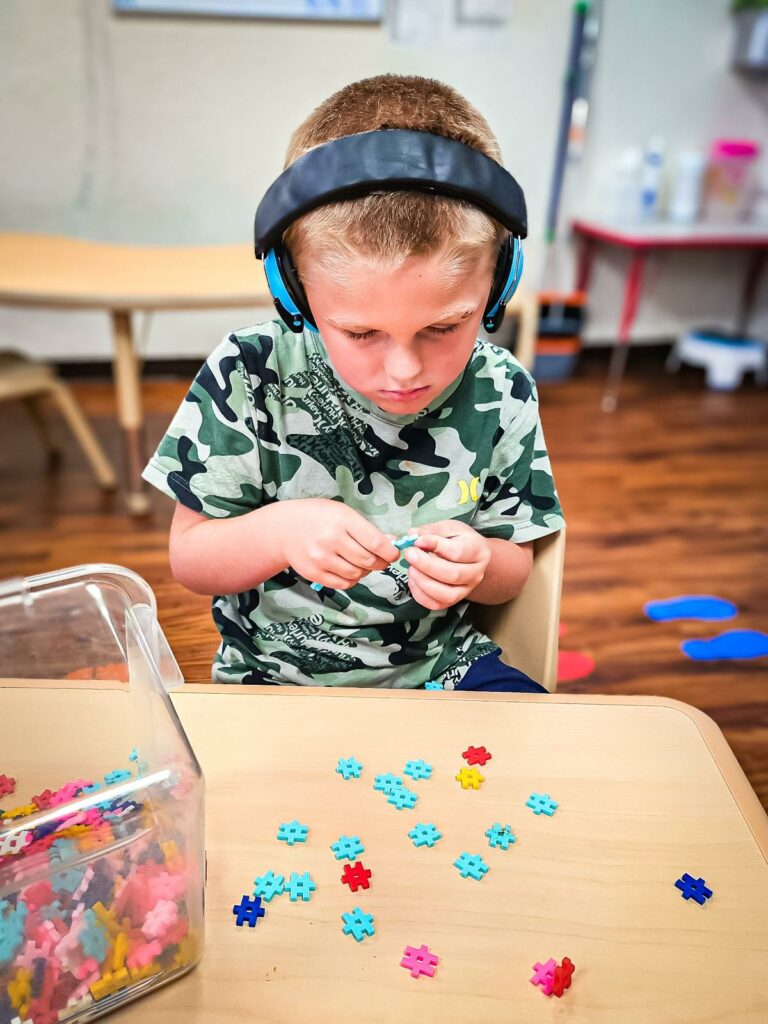Have you noticed children jumping up and down, flapping their hands, or repeating phrases repeatedly? These behaviors aren’t just random quirks; they are a window into how neurodivergent children process the world around them. Known as stimming (self-stimulatory behavior) and scripting (recycled use of phrases, sounds, or songs), these natural coping mechanisms help individuals self-regulate, find comfort, and thrive in their unique way.
During one of our most popular Pam and the Purple Couch podcast episodes, Pamela Furr and co-hosts Dr. Manny and Missy unpack these behaviors in a heartfelt episode that blends personal stories with professional expertise. Together, they offer valuable insights to help parents, educators, and caregivers better support the neurodiverse individuals in their lives (see the full episode link at the end of this piece).
Here’s a deeper look into stimming and scripting, their importance, and how we can respond with empathy, understanding, and encouragement.

What Are Stimming and Scripting?
- Stimming refers to repetitive movements, sounds, or behaviors. Common examples include jumping, hand-flapping, finger-tapping, or rocking. These activities release energy or reduce sensory overload for children and adults with sensory processing disorders, autism, or other neurodivergencies. But did you know even neurotypical individuals stim in subtle ways? Think pen-clicking or foot-tapping while focusing on a task!
- Scripting, however, involves repeating phrases, lyrics, or dialogues, often from TV shows, commercials, or everyday interactions. For neurodiverse children, scripting isn’t just parroting; it’s often a meaningful way to express emotions, cope with anxiety, or practice language skills when verbal articulation may otherwise be challenging.
Why Are Stimming and Scripting Important?
One of Pam and her co-hosts’ most impactful takeaways is this simple truth: stimming and scripting are not problems that need fixing. Instead, they’re natural ways children regulate themselves, express joy, or even boost their concentration.
Pam shares a story about her son, Loki, affectionately known as her “butterfly boy.” Loki’s hand-flapping and jumping served as his way to self-soothe. Over time, Pam learned when and how to shape his habits to adapt to social environments without denying him the coping skills he needed to thrive.
Rather than asking, “How do I stop my child from stimming or scripting?” Pam encourages parents to explore why their child engages in these behaviors. Here’s what to keep in mind:
- Stimming can help release energy, ease stress, and even sharpen focus.
- Scripting can serve as a bridge between emotions and communication.
- For many individuals, these behaviors are a natural part of existing in a stimulating world.

How Can We Support Neurodiverse Children Who Stim or Script?
Pam, Dr. Manny, and Missy share a blend of practical strategies and empathetic advice for parents and caregivers. Here’s what they recommend:
1. Observe and Learn
Before jumping to conclusions, observe when and why stimming or scripting occurs. Is it a reaction to stress, excitement, or overstimulation? Understanding the trigger can help you support your child more effectively.
2. Celebrate, Don’t Suppress
Stimming and scripting aren’t “bad” behaviors. If they’re not harmful to the child or others, celebrate them as a natural part of your child’s identity. For example, in their episode, Dr. Manny emphasizes that too often, social expectations create unnecessary pressure to suppress these behaviors. Instead of erasing them, create environments where they can thrive.
3. Encourage Self-Advocacy
Empowering children to advocate for themselves can make a world of difference. Start with simple conversations, like, “What do you feel when you jump up and down?” or “How does repeating that phrase make you feel?” Teach them to communicate their needs to caregivers, teachers, or peers when necessary.
4. Find Alternatives When Needed
While stimming and scripting don’t need “fixing,” there may be times when adjustments are necessary. Pam shares how Loki incorporated less noticeable ways to stim when he began noticing people staring in public. For example, jumping could be substituted with walking or squeezing a sensory ball.
5. Advocate for Inclusion
Parents and teachers play a vital role in creating inclusive classrooms accommodating stimming and scripting. If your child learns best while tapping their hands or reciting phrases, work with educators to create supportive adaptations. Special seating arrangements or sensory-friendly breaks can make environments more inclusive.
6. Teach Empathy to Others
Often, the stigma around behaviors like scripting arises not from the child but from adults or peers who don’t understand them. Help those around your child see stimming and scripting as coping mechanisms, not distractions. Build awareness among family members, teachers, and friends to foster a more inclusive community.
Key Insights For Your Child
On “The Purple Couch Podcast,” Pam reflects on her son Loki’s evolution and the larger lessons his behaviors have taught her. One striking realization? Self-regulation techniques like stimming are behaviors many adults pay to learn through mindfulness and meditation. Our children do it intuitively.
Missy and Dr. Manny emphasize the need for cultural shifts in schools and workplaces. Whether it’s redefining how classrooms accommodate neurodivergent students or creating sensory-friendly spaces, there’s still work to do to break stigmas and put inclusivity at the forefront.
Together, the trio reminds listeners that every child, neurodiverse or neurotypical, thrives when supported with acceptance, guidance, and love.
“The world needs more coping skills. Instead of masking these behaviors, we can all learn from them.”
Tune in to Learn More
If you’re curious to learn more about stimming, scripting, and how to better support children with neurodiverse needs, listen to the full episode of “Pam and The Purple Couch Podcast.”
🎧 Full Episode Here
For additional resources and insights, visit the Pamela Furr website or follow us on Instagram. Discover a community that embraces individuality, inspires inclusivity, and thrives on understanding.
Together, we demystify the world of autism, one heartfelt conversation at a time.
#ThePurpleCouchPodcast #ParentingAdvice #NeurodiverseSupport #AutismAwareness #StimmingAndScripting
External Links
- What is Autism Scripting? – Explains autism scripting as a way to communicate and express oneself.
- Understanding Stimming in Autism: Types, Benefits, and More – Discusses stimming, its types, and its benefits.
- What Is Autistic Scripting? – Covers scripting as a form of communication and sensory enjoyment.
- Neurodiversity Affirming Social Skills Training – Explores neurodiversity-affirming approaches, including masking and empathy.
- Why Scripting is Important for Autistics – Highlights the role of scripting in processing real-life experiences
Internal Links
- Programs and Services: Inquire about programs – This section discusses their partnership with Kaleidoscope Interventions, which includes ABA therapies and parent training potentially relevant to stimming and scripting.
- Embracing the Whole Student: Learn more about their holistic approach – This section highlights their focus on supporting the whole student, which could include addressing behaviors like stimming and scripting.
- A Different Way to Learn: Discover their difference – This section explains their tailored learning environment, which might relate to supporting neurodivergent behaviors.
- Exceptional Personalized Learning: Explore their personalized learning approach – This section emphasizes individualized education, which could include strategies for managing stimming and scripting.
- Parent Training: Learn about parent training. As mentioned in their partnership with Kaleidoscope Interventions, this could be relevant for parents learning about stimming and scripting.

